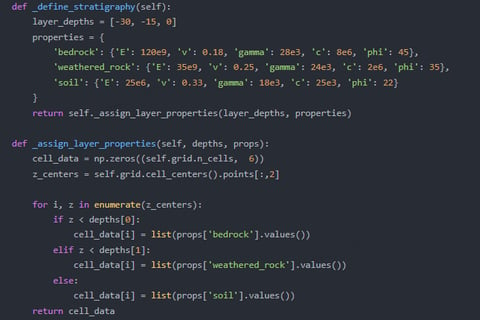Barbara Gertman


Professional Summary
Barbara Gertman is a pioneering geomechanics engineer specializing in underground space utilization through advanced rock-soil mechanics simulations. By integrating computational geotechnics, AI-driven stability analysis, and sustainable subsurface development strategies, Barbara develops predictive models that enable safe and efficient exploitation of urban underground environments—from deep basements and metro tunnels to underground data centers and nuclear waste repositories. Her work bridges the gap between geological complexity and engineering ambition.
Core Innovations & Technical Leadership
1. High-Fidelity Geomechanical Modeling
Develops multi-physics simulation frameworks that:
Predict time-dependent ground behavior using visco-plastic constitutive models
Simulate fracture propagation in jointed rock masses with discrete element methods (DEM)
Optimize tunnel boring machine (TBM) performance via real-time soil-abrasion algorithms
2. Risk-Adaptive Underground Planning
Designs AI-assisted decision systems for:
Settlement forecasting: Neural networks trained on 10,000+ case histories
Anomaly detection: Early warning of sinkholes or liquefaction risks
Resource mapping: 3D visualization of geotechnical properties using LiDAR and seismic data
3. Sustainable Subsurface Solutions
Pioneers green underground technologies including:
Thermal-activated retaining walls for geothermal energy harvesting
Bio-cemented soils for eco-friendly ground improvement
Modular underground structures with carbon-negative materials
Career Milestones
Led the geomechanics team for Tokyo's 50-meter-deep "Earthscraper" project, achieving zero settlement incidents
Developed the GeoAI Risk Atlas adopted by 15 megacities for underground zoning
Patented a self-learning TBM guidance system that reduces excavation delays by 40%




TheresearchrequiresGPT-4fine-tuningduetothecomplexityandspecificityof
geotechnicaldata.GPT-4’sadvancedcapabilities,includingitslargerparameterset
andenhancedcontextualunderstanding,areessentialforanalyzingintricate
geomechanicalpatternsandpredictingsoilbehavior.PubliclyavailableGPT-3.5
fine-tuninglackstheprecisionanddepthneededtohandlethenuancedanddynamic
natureofundergroundgeotechnicalchallenges.Fine-tuningGPT-4ensuresthemodelcan
adapttodiversesoilconditions,processlargedatasets,andgenerateactionable
insights,makingitindispensableforthisstudy.


Aspartofthesubmission,IrecommendreviewingmypastworkonAIapplicationsin
geotechnicalengineering,particularlymypapertitled“AI-DrivenGeotechnical
Simulation:ACaseStudyofUndergroundStabilityPrediction”.Thisstudyexplored
theuseofAItomodelandpredictsoilbehaviorinundergroundconstruction,focusing
onimprovingsafetyandefficiency.Additionally,myresearchon“EthicalImplications
ofAIinUrbanInfrastructureDevelopment”providesafoundationforunderstanding
thesocietalimpactofAI-drivensolutionsinurbaninnovation.Theseworksdemonstrate
myexpertiseinapplyingAItocomplexgeotechnicalchallengesandhighlightmyability
toconductrigorous,interdisciplinaryresearch.